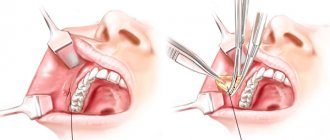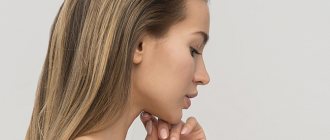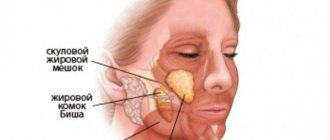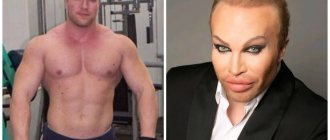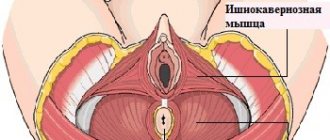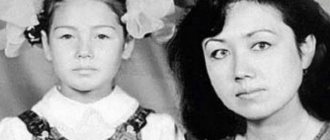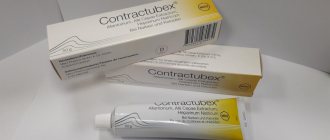The main priorities of modern plastic surgery methods are safety for the patient and a minimum of side effects. The method of resection of Bisha's lumps, which is carried out to reduce the volume of the cheeks, in this regard has already become a classic, repeatedly proven technique.
In the lower third of the face, between the skin and the mucous membrane of the cheek, there are small fatty formations - Bisha lumps (fatty body of the cheek). They do not bear any functional load, except for a short period in infancy. It is believed that these lumps help the baby adapt the shape of his cheeks so as to facilitate the sucking process. Resection of Bisha's lumps in adulthood does not disrupt any physiological processes. But in some cases, their removal has the effect of reducing the volume of the cheeks and narrowing the face.
Marie François Bichat (1771 - 1802) was a French anatomist, physiologist and physician.
Operation technique: description and photo
Removal of Bisha's lumps is carried out through intraoral access
.
This approach has a number of advantages. Firstly, the incision is made on the mucous tissue, which means there are no traces of the operation left (scars are not formed on the mucous membrane). This avoids the long process of tissue restoration after scarring. Secondly, Bisha's lumps are located close to the inner walls of the cheeks and they are easily removed. This type of operation to eliminate Bisha’s lumps is quite universal and the technique has been tested many times.
The operation can be performed under local or general anesthesia. The choice is up to the patient. If he is psychologically ready to feel the progress of the operation, we can limit ourselves to local anesthesia. If there are concerns that these sensations will cause psychological discomfort, or resection of Bichat bodies is combined with some kind of correction, it is better to choose general anesthesia.
Second option of operation
– through incisions on the skin of the face. As a rule, such manipulation is not carried out just for the sake of removing Bish’s lumps. Typically, removal of lumps from the outside is done as an addition to any major plastic surgery involving punctures or incisions in the skin. For example, with a facelift, implantation of facial implants. In this case, to remove Bisha's lumps, “entry holes” on the skin formed as a result of the main operation are used.
This method is a little more complicated than the first option (with cuts on the mucous membrane). The fact is that between the superficial facial muscles and Bish’s lumps there are ducts of the salivary glands, and also nerve endings pass through. During surgical manipulations, extreme care is required to avoid damaging them.
Successful stellar examples of removing Bisha's lumps
Although not all stars decide to remove Bisha's lumps, this operation is recommended for such recognized beauties as Mila Kunis, Selena Gomez and Drew Barrymore.
Positive examples of removing Bisha lumps include Angelina Jolie, Renee Zellweger, Kate Winslet, Megan Fox. Among Russian stars, successful results can be noted from Olga Buzova, Ksenia Borodina, Svetlana Loboda, Anna Sedokova, Polina Gagarina, Alsou. The operation helped each of them gain more defined cheekbones. Let's take a closer look.
What are lumps (lumps) of Bisha?
These are special formations that are located under the cheekbone, closer to the center of the cheek on each side of the face. They are a cluster of fat cells collected in a dense capsule. The lumps got their name thanks to the discovery of the French anatomist and physiologist Marie François Xavier Bichat.
These formations have three lobes - anterior, middle and posterior. The anterior lobe surrounds the excretory duct of the parotid salivary gland; the middle lobe occupies an intermediate position between the anterior and posterior, located above the upper jaw and significantly reduced as a person grows older; the posterior lobe is directed from the infraorbital groove and the temporal muscle to the upper edge of the mandible and, further, to the ramus of the mandible.
The size of the lumps may vary from person to person. For some, the formation is the size of a quail egg, for others it is similar in size to a chicken egg. The more lumps in the thickness of the cheeks, the fuller the face looks. This is an individual feature.
Svetlana Loboda
For many today, Svetlana is the recognized standard of beauty - our answer to Angelina Jolie. Girls are guided by it when they come to surgeons and cosmetologists and say who they dream of being like. Removal of Bisha's lumps made it possible to significantly reduce the volume of the cheek-zygomatic area and change the relief of the cheekbones. The intervention was performed delicately, and the singer’s appearance benefited from it.
Sign up for a free consultation:
Rehabilitation after removal of the cheek fat pad
After surgery to remove Bisha's lumps through intraoral access, there is practically no rehabilitation period. Of course, it is necessary to follow a gentle diet so as not to injure the scar tissue, take antibiotics, and visit your doctor to monitor the situation. Full recovery occurs in 12-14 days.
In the case of removal of Bichat bodies through punctures on the outside of the face, as a concomitant operation, rehabilitation procedures are determined by the requirements of the main plastic surgery.
Photos before and after removing Bisha's lumps
Alternative Cheek Reduction Methods
The operation to remove Bisha's lumps is sometimes confused with liposuction of the cheeks, although these are completely different operations. Liposuction removes fat from the subcutaneous tissue. Your doctor will best advise you which procedure to choose. In addition to computer methods for modeling the shape of the face after surgery, which many aesthetic surgery clinics now provide, an experienced surgeon can tell you what results a particular correction method will give for a given patient.
Removing Bisha's lumps will not help everyone
give the face an aristocratic narrowness.
Firstly, the face should not be full. Compared to the volume of excess subcutaneous fat in people with full cheeks, the size of Bisha's lumps is insignificant, and their removal will not produce visible changes. Secondly, some shapes of the lower jaw and cheekbones, even on a thin face, anatomically create such a profile that resection of lumps will not lead to a narrowing of the face. Therefore, it is always recommended to carry out preliminary modeling and consult with a surgeon who performs such operations. OPINION (reviews) of plastic surgeons about the operation to remove Bisha's lumps >>
Facial liposuction: another method for cheek reduction
The most effective way to get rid of excess fat on the cheeks is liposuction. This is a more invasive procedure and therefore requires a longer recovery period. The technique of liposuction is the same as for body shape correction. The only caveat is that for the face, as a rule, cannulas of minimal diameter and the tumescent method of fat breakdown are used. A solution of a mixture of lidocaine and adrenaline is injected under the skin. It destroys adipose tissue, turning it into a fat emulsion. For small volumes, this method proves to be effective and less traumatic than the mechanical method of destroying fat. After this, using micro-cannulas, the resulting liquid is pumped out in the traditional way. Laser liposuction (laser lipolysis) is also quite effective in the facial area.
Patients are always warned that liposuction is not a weight loss method. If you have problems with the endocrine, digestive or other systems of the body that cause excess weight, you need to contact specialized doctors.
After liposuction of the cheeks, the recovery period takes at least a month. Therefore, if you decide to undergo liposuction, removal of Bisha’s lumps can be performed as a concomitant procedure. The consequences of this manipulation are leveled out in a few days. At the same time, after liposuction you will have to wear a support mask on your face for 2-3 weeks.
The results of liposuction largely depend on the initial condition of the patient's skin. Young, elastic skin quickly “sits” into new shapes. In adulthood, it is no longer so elastic. Removing part of the subcutaneous volume can lead to sagging. In such cases, a competent surgeon will advise combining the operation with facial skin tightening or SMAS plastic surgery.
Facial implants: creating high cheekbones
Another common method of cheek correction, which is effectively combined with resection of Bisha's lumps, is the installation of facial implants. The most commonly used implants are zygomatic implants. Combining these manipulations allows you to narrow the lower part of the face (removal of Bisha's lumps) and expand it, obtaining the desired, constant volume in the cheekbones (installation of facial implants).
Combination of several operations
Combining several plastic surgeries is a common practice, especially in facial plastic surgery. The fact is that after each procedure a long recovery process is required. The face does not return to its desired shape for a long time, swelling persists. This forces the patient to interrupt business activities, sometimes to take a long vacation. Not everyone can afford to take such time-outs several times. Therefore, by combining two or three operations in one, the patient receives the desired effect, while the rehabilitation period corresponds to the most invasive of these procedures. The most common option for simultaneous operations in the context of our topic: facial liposuction and removal of Bisha's lumps.
How is the operation performed?
Plastic surgery can be performed using different types of anesthesia - both general and local anesthesia. A plastic surgeon makes an incision using a scalpel or a surgical laser knife (if there are no contraindications, the second option is preferable). Access “opens” from the inside of the cheeks, that is, no visible traces of surgical intervention will remain.
After the incision is made, a certain amount of fat is removed. How much exactly is determined individually, based on what specific result you want to get. Moving fat deposits closer to the cheekbones will help restore the beautiful shape of the lower third of the face and chin, making cheekbones more defined and making the face visually younger. After completing all the manipulations, the doctor applies self-absorbing sutures. Cheek plastic surgery will take you no more than an hour. On the same day you can safely go home.
For some time after plastic surgery, you may be bothered by swelling, and your face will appear even larger than before the intervention. You shouldn’t be afraid of this reaction of the body: the swelling will gradually go away, and you will be able to evaluate the intermediate results. The final result will appear in about six months, when the tissues have completely healed and “settled”.
In addition to the standard restrictions (refusing the pool, sauna and physical activity), you will have to follow the doctor’s special recommendations for about 2-3 weeks: avoid stress on the facial muscles as much as possible, sleep on your back on a high pillow, take non-hot and non-cold food that is not necessary chew for a long time (in the first days only liquid food). The result of your efforts and the efforts of the surgeon will be new contours of the cheekbones and, as a result, a sophisticated and aristocratic facial contour.
Indications for surgery
Removal of Bisha's lumps in our clinic is carried out for visual correction of the lower third of the face. The patient needs to understand that this service will not create a completely new facial oval. The features will remain the same, because such a correction does not change the structure of the maxillofacial part of the skull, but they will become clearer and thinner.
When plastic surgeons recommend surgery:
- formation of excessively deep nasolabial folds;
- the presence of unaesthetic “jowl” folds that form with age;
- excessive formation of adipose tissue localized in the cheek muscles;
- as an additional method for face lifting with threads, liposuction and other types of correction.
From a medical point of view, these fatty formations are not a pathology, so they are removed solely for aesthetic reasons.
Types of procedure
At the Miracle Doctor multidisciplinary clinic, experienced plastic surgeons perform surgery in two ways. How much it will cost to remove Bisha's lumps in Moscow depends on the chosen technique and the complexity of the manipulation.
Classic operation
It is performed using a micro-incision 1–2 centimeters long on the inside of the cheek. During the manipulation, a standard set of surgical instruments is used. In some cases, access is formed from the outside when a more extensive operation is performed, for example, a circular facelift.
Laser surgery
In this case, instead of a scalpel, the doctor uses a laser beam. When making an incision, small blood vessels coagulate under the influence of temperature. Next, the operation is carried out according to the same scheme as the classical one.
Contraindications
Bichectomy is an operation that has a number of contraindications. Among them:
- diabetes;
- poor blood clotting;
- some liver dysfunctions;
- exacerbation of chronic diseases;
- pregnancy, breastfeeding.
Expected Result
By removing Bisha's lumps, the patient receives the desired effect in the shortest possible time. The face becomes more harmonious, and most importantly, the volume of the cheeks is reduced. Also, as a result of aesthetic plastic surgery, cheekbones become more pronounced, and the face looks more sophisticated. These changes have a positive effect on self-esteem, and the patient becomes more self-confident, which in turn affects the quality of life.
Photos before and after surgery to remove Bisha's lumps
Preparation for the procedure
Before removing Bisha's lumps, the plastic surgeon prescribes tests for the patient to exclude possible contraindications.
In addition, the doctor warns that during the restoration of soft tissues you will need to follow the recommendations to avoid complications.
A few days before your appointment, you must stop smoking, drinking alcohol, and certain medications.
Operation stages
To remove Bish's lumps, the patient undergoes surgery under general anesthesia or using local anesthesia. The choice of anesthesia method is made by the surgeon together with the patient, relying on available indications and contraindications.
The doctor creates access through the oral mucosa, so no marks remain on the outside.
Bichectomy is performed in the following sequence:
- The patient is sedated or given local anesthesia to the surgical area.
- The mucous membrane in the surgical area is treated with an antiseptic solution.
- An incision of 1–2 centimeters is made alternately on the inside of the cheeks.
- Through the created access, the plastic surgeon removes Bisha's lumps completely or partially. In some cases, the fatty tissue is not excised, but is moved higher to make the cheekbones more defined.
- At the end of the manipulation, the wound is sutured using self-absorbing threads and a sterile bandage is applied.
In some cases, access can be created from the outside if bischectomy is performed together with a larger surgical intervention. After surgery, the effect can be seen after the swelling has subsided for one or two weeks.
The final result of plastic surgery is clearly visible after a few months. During this time, the muscle tissue finally adapts, and the skin tightens.
Rehabilitation after the procedure
The recovery period after surgery is approximately 1 to 3 weeks. Patients tolerate the consequences of plastic surgery quite easily, since it is minimally traumatic compared to other larger operations.
After completing the procedure, to avoid complications, the surgeon makes the following recommendations:
- Sleep only on your back.
- Limit physical activity.
- Quit smoking and alcoholic beverages.
- Avoid visiting a solarium, bathhouse or sauna.
- It is not recommended to visit swimming pools or any open bodies of water.
- In the first seven days, chewing load is minimized and only liquid food is consumed.
- Limiting facial expressions so that excessive activity does not affect the results of plastic surgery.
- When brushing your teeth, you must be careful not to touch the sutures placed on the mucous membrane.
Possible complications
The risk of negative consequences after removing Bisha's bags exists regardless of the qualifications and experience of the plastic surgeon, the quality of the drugs and the equipment used. An important role in this is played by the individual characteristics of the patient’s body, as well as compliance with medical recommendations during the recovery period.
What complications can develop from classical or laser bichectomy:
- facial asymmetry;
- numbness in the lower third of the face;
- the “exhausted” effect with severe weight loss;
- dysfunction of the salivary glands and facial muscles.

